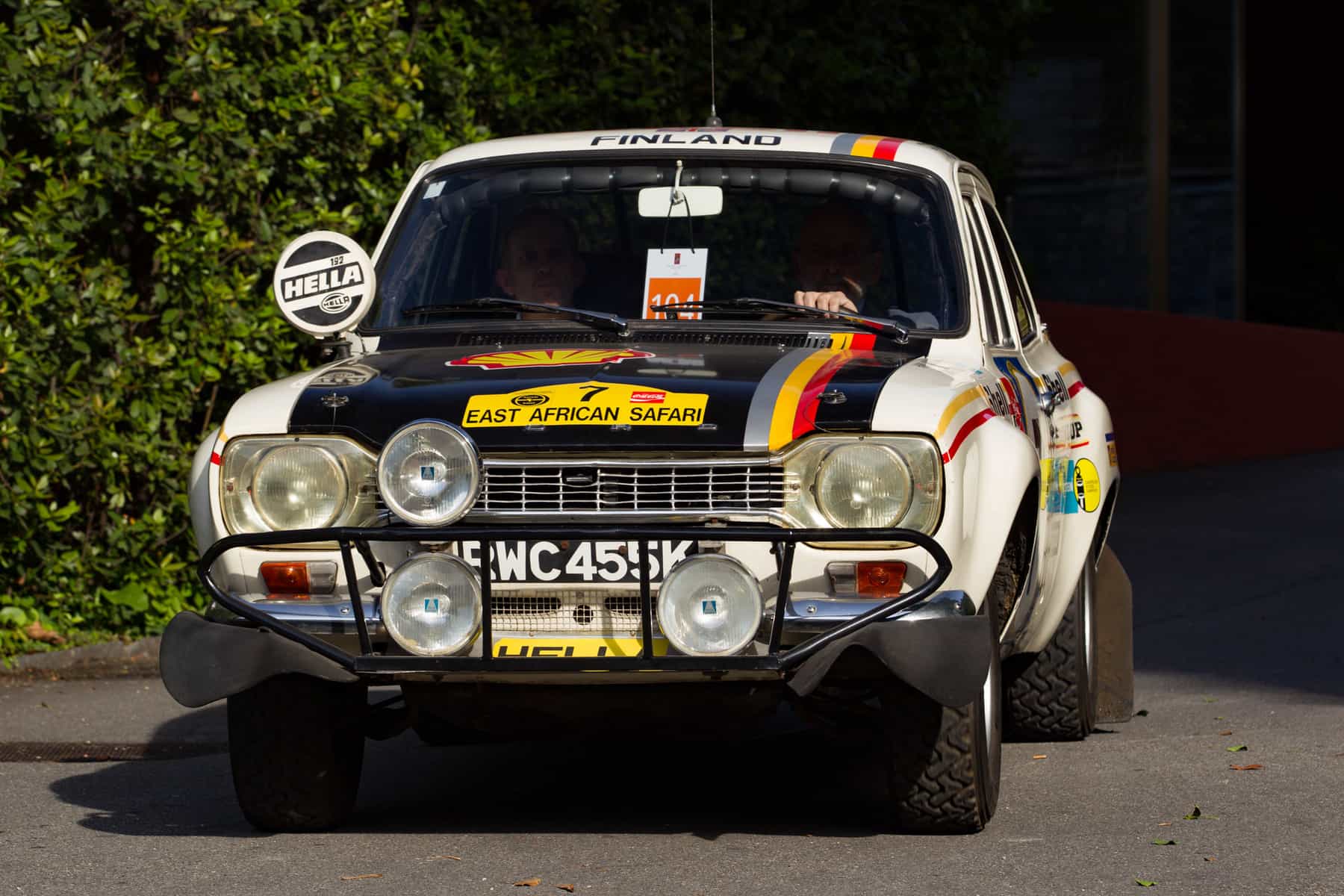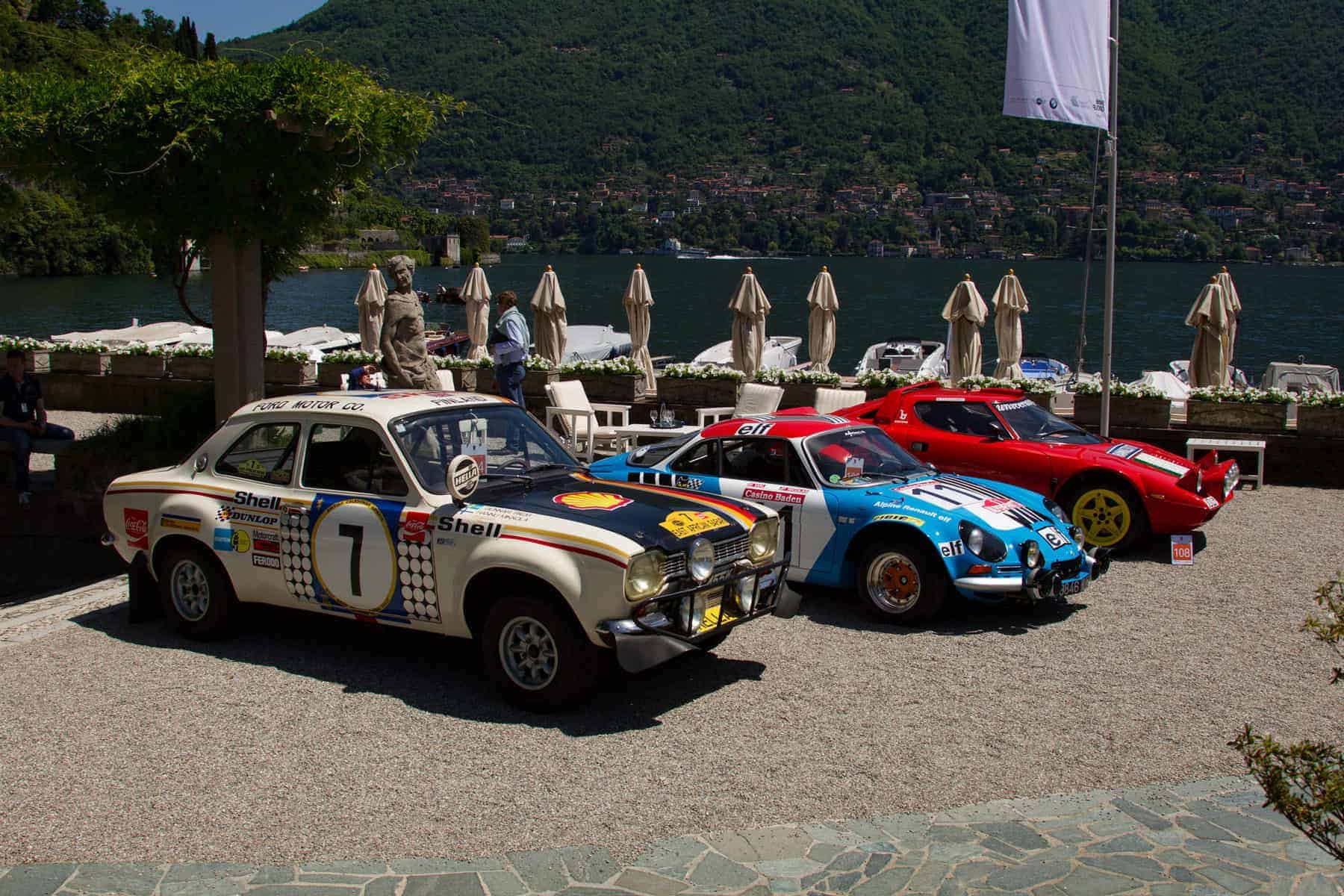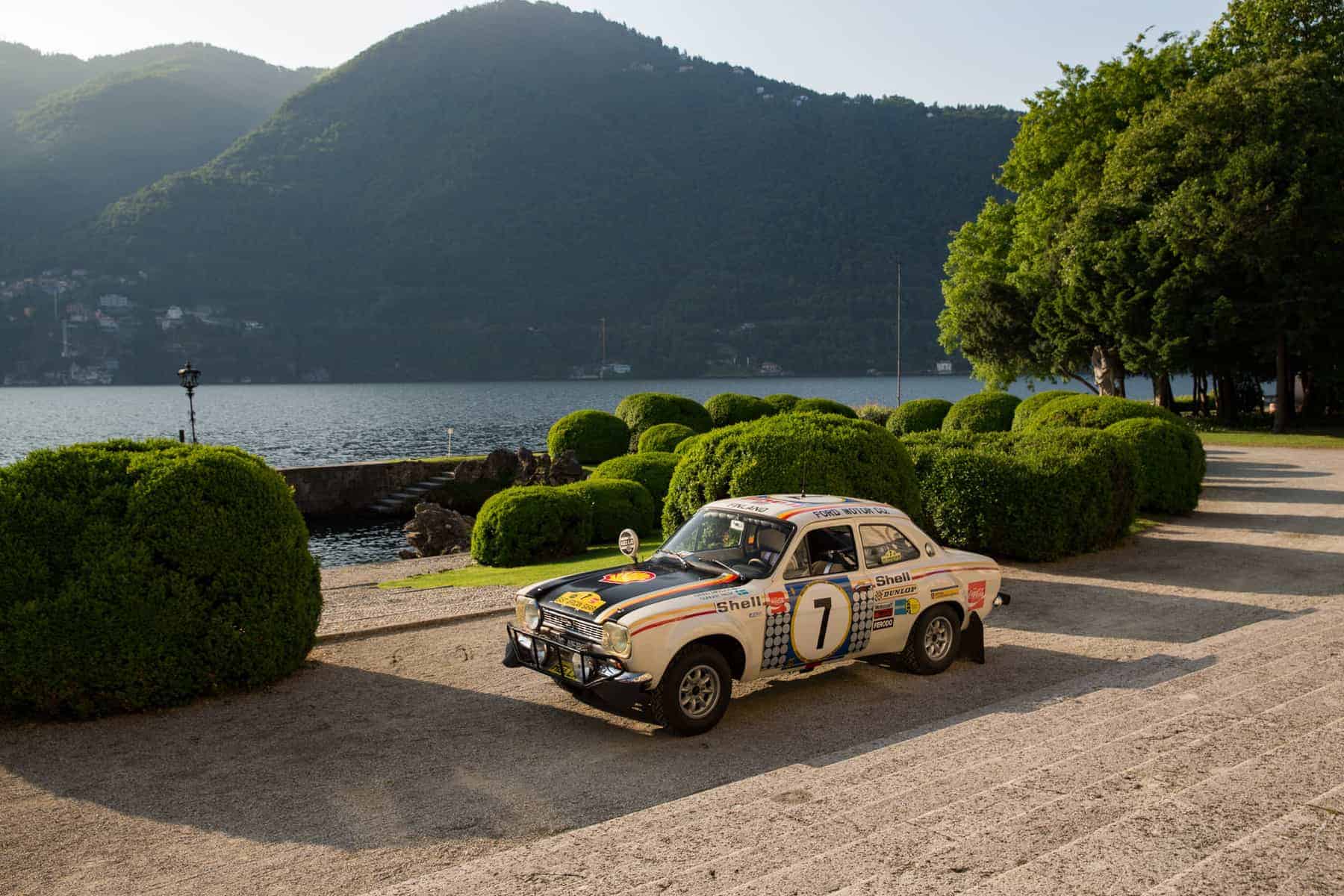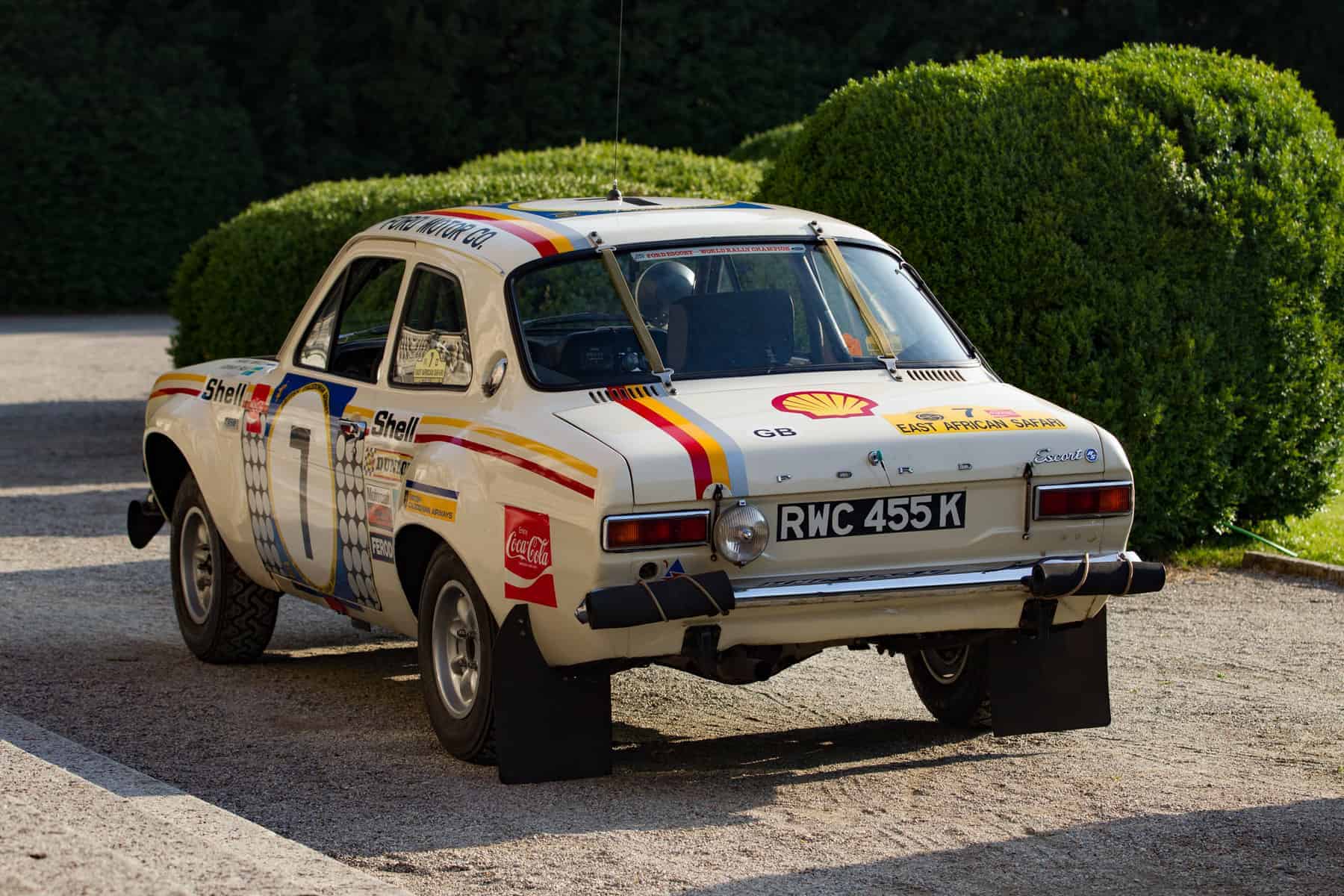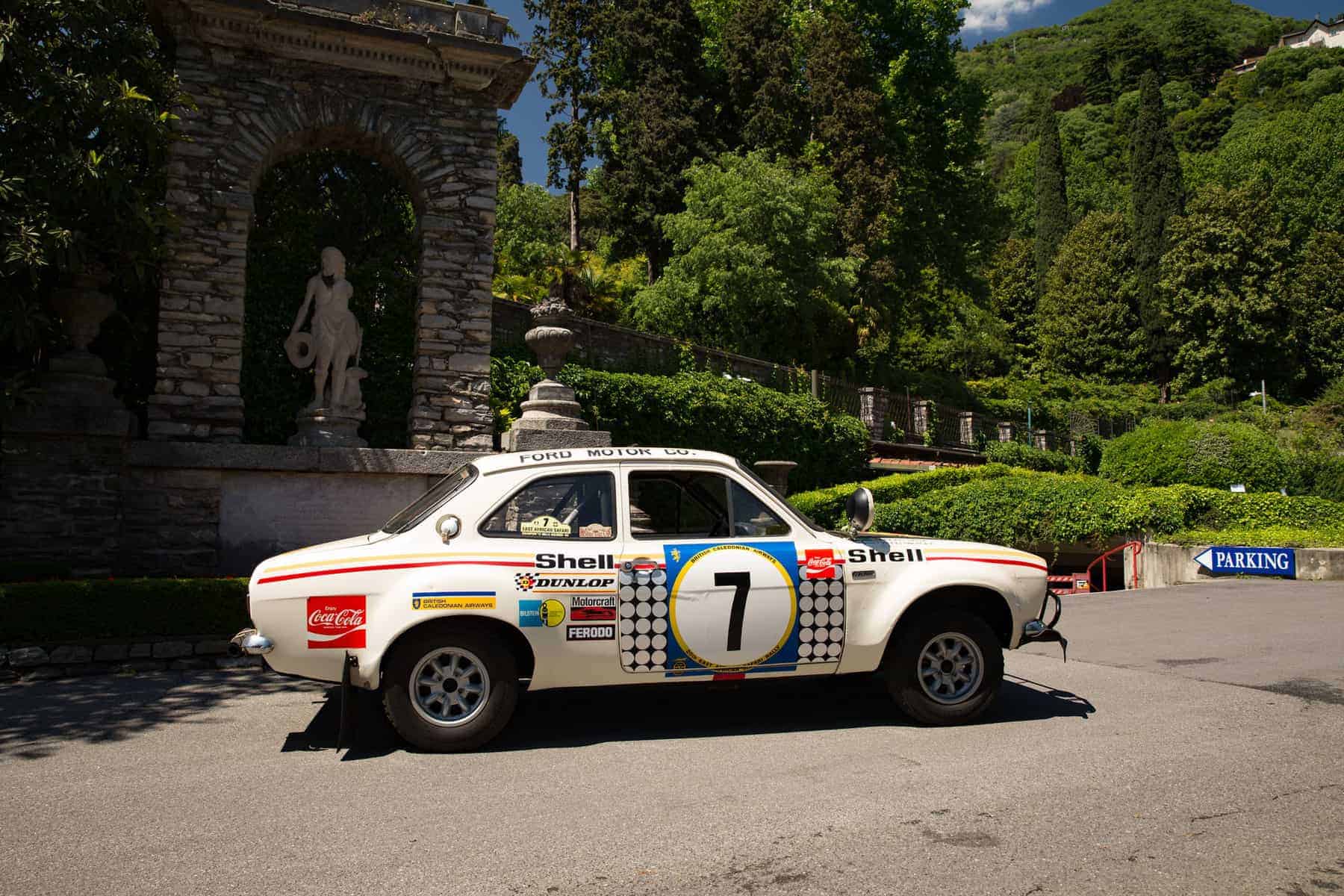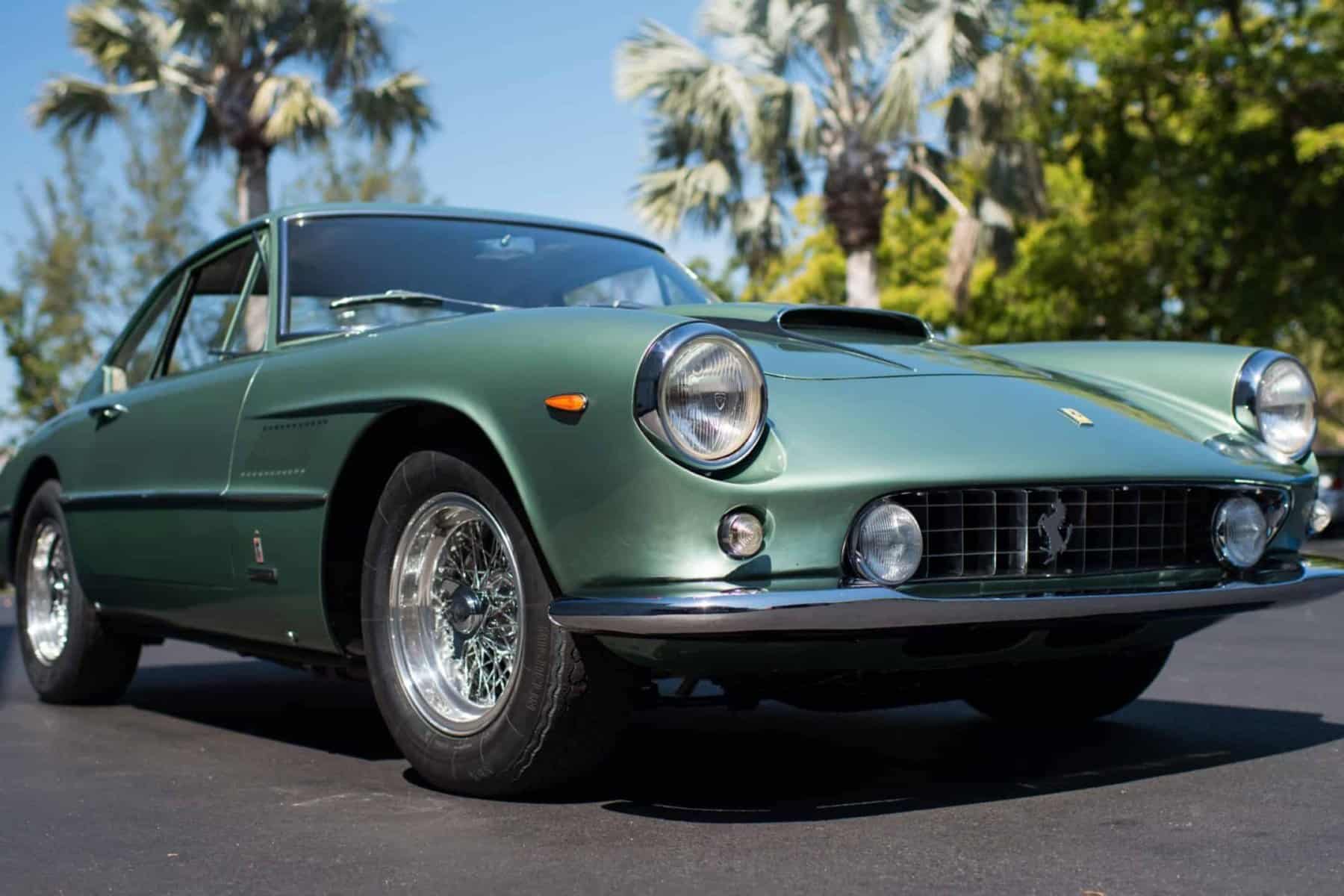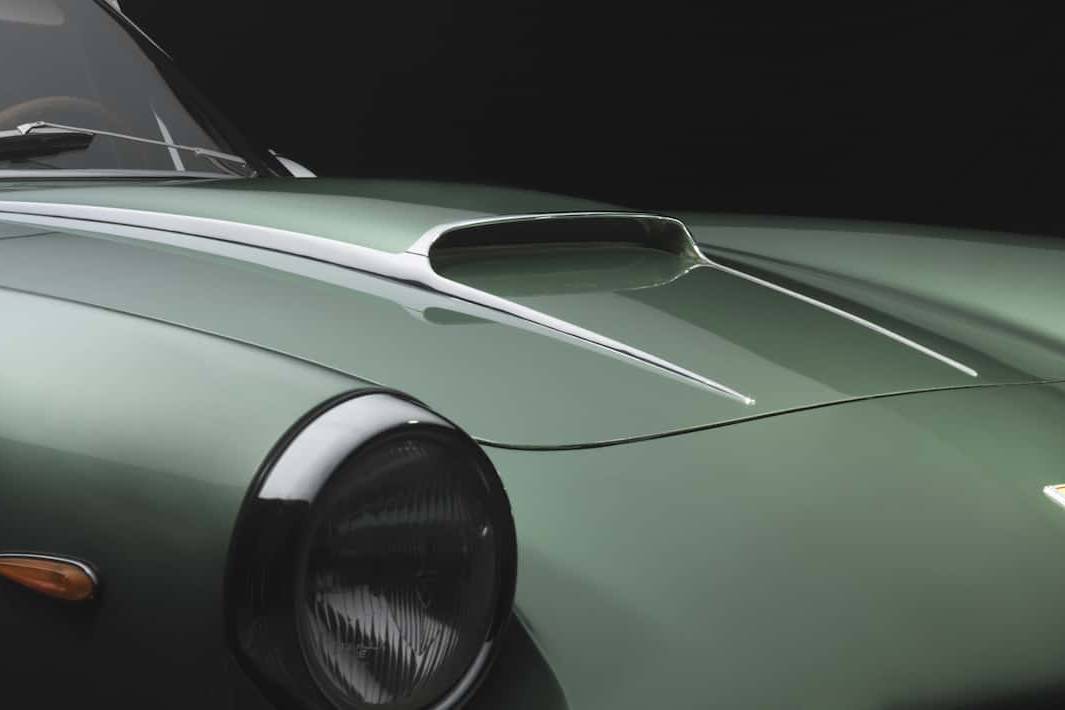Ford Escort RS 1600
A rally car to cherish
BY: WOUTER MELISSEN
“Unsophisticated, crude, rugged, sweaty, even primitive; these are adjectives which, on the face of it, can hardly be considered complimentary.
Yet when they are applied to the East African Safari Rally there can be no person who has ever had anything to do with that event who would deny that they are applicable in the most complimentary sense possible.”
This is the opening paragraph of the event report on the East African Safari Rally in the May 1972 issue of Motorsport magazine. Author Gerry Philips continued: “Some years ago we described that event as the toughest test of a motor car ever devised by man. After watching eighty-five cars whittling themselves down to eighteen along an impossibly fast 6,000 km route through the East African bush at Easter time, we can only confirm that it has not outlived its reputation.” Of the eighteen surviving cars, the Ford Escort RS 1600 shared by Hannu Mikkola from Finland and his Swedish co-driver, Gunnar Palm, was the fastest of all. It was a historic victory, as Mikkola became the first winner not born on the African continent.
The first East African Safari Rally was held in 1953 to celebrate the coronation of Queen Elizabeth II. Accordingly, the event was originally known as the Coronation Safari Rally and ran through the British colonies of Kenya, Uganda, and Tanganyika. What made the event so infamous was the fact that it was run on more than 5,000 km of public roads. If this in and of itself was not demanding enough, these very roads were still open to regular traffic. Not only was this very challenging for the driver and co-driver but perhaps even more so for the support crew, who had to chase the rally cars to make almost continuous repairs. The inaugural edition was won by Alan Dix with a Volkswagen Beetle. He was born in Kenya and up until 1972 all subsequent winners were either from Kenya or Tanzania, underlining the fact that local knowledge was crucial for success. From the eighth edition, in 1960, the event was renamed the East African Safari Rally.
In 1955, Vic Preston Sr. drove a Ford Zephyr to victory. This was by no means a factory-developed rally car but rather a mildly modified road car with changes focusing more on durability rather than performance. During the 1960s, rallying really became a professional sport and Ford established a works team. Operating out of Boreham in Essex, England, the Ford Competition Department debuted their first car, a mildly modified Ford Cortina GT, during the 1963 season. Over the winter, the Cortinas were further modified and a total of six were entered in the 1964 East African Safari Rally. The example driven by Peter Hughes won the grueling event and a sister car driver by Peter Armstrong was classified third. Championed by the new head of public relations, Walter Hayes, the motorsports efforts at Ford were ramped up during the decade as the Cortina was replaced by the all-new Escort.
First introduced in 1968, the Escort line-up included the “Twin Cam” model, which, as its name suggests, was powered by a twin-cam engine. This was the same eight-valve, four-cylinder unit that had originally been developed by Lotus for the hugely successful Cortina Touring and Rally cars. The production road car served to homologate the Escort Twin Cam for use both in international Touring car and Rally championships. The Escort continued where the Cortina had left off, dominating the 1968 British Touring Car Championship but also scoring a win in the prestigious 1970 London to Mexico World Cup Rally. Even though the Twin Cam had been replaced by the new Escort RS 1600 in 1971, Ford was not convinced that the new rally car would last the distance and entered the Twin Cam once more in the East African Safari Rally. Sadly, the eight-valve Escort could not take victory in the most grueling of all rallies in 1971.
Added to the Escort range in 1970, the RS 1600 was powered by what was effectively a thinly disguised racing engine. The RS was short for “Rallye Sport,” which clearly signaled the new model’s intention. The main trick up its sleeve was the “BDA” engine that had been developed specifically for the RS 1600 by Ford’s engine partner Cosworth. For homologation purposes, it was based on the same “Kent” block as the earlier Escort engines but featured a bespoke aluminum alloy head. This featured twin overhead camshafts and four valves per cylinder. BDA is short for Belt Drive, Type A, which is a reference to the belt that drives the camshafts from the crankshaft. Mounted at the front of the engine, this rubber belt was fully exposed. While the road car had a 1,599 cc displacement, it was homologated at 1,601 cc to ensure the RS 1600 could run in the top class (1,600 cc and over) to make it eligible for overall and not just class wins.
The BDA engine was mounted in a reinforced shell, which the RS 1600 shared with the new Escort Mexico that was also introduced in 1970. Fitted with an overhead valve, crossflow engine, this high-performance model was named to commemorate the London to Mexico victory. By beefing up the unitary chassis in key areas, the Escort became even more adapt at both circuit racing and rallying. The suspension was through lower wishbones and McPherson struts at the front and a live rear axle with leaf springs at the back. The RS 1600 was homologated with front disc brakes to ensure the competition cars would stop as well as they went. While the production road car looked inconspicuous, the competition version featured flared wheel arches to house wider tires and boasted a full roll-over cage to protect the car’s occupants in case of an accident.
The Escort RS 1600 was officially homologated for competition use on October 1, 1970, after the Royal Automobile Club had determined that the required 1,000 road-going examples had been produced by September 1 that year. Roger Clark had already driven an RS 1600 to victory in March of 1970 when the car was still considered a prototype. It would take until June of 1971 before the new sixteen-valve engine scored its first major success when Chris Slater piloted his BDA-engine Escort Twin Cam to victory in the Scottish rally. More victories would follow soon thereafter, and the Escort would become one of the most successful Rally and Touring cars of the era. The success continued after the original Escort was replaced by the Mark II towards the end of the 1975 season.
While the RS 1600 had sat out the 1971 East African Safari Rally, it was pressed into service for the twentieth edition, in 1972. The event was already highly regarded, but had gained increased importance as it was now part of the International Championship for Manufacturers (ICM), which would become the World Rally Championship (WRC) in 1973. With a start and finish in Tanzania’s capital Dar es Salam, the 1972 edition had the second-longest route in the history of the event. This took the entrants through all three, now independent, East African countries of Tanzania, Uganda, and Kenya. In addition to the five Escorts fielded by Ford, there were also works entries from the likes of Peugeot, Fiat, Datsun, and Holden.
Well aware of the challenge that lay ahead, the engineers at Boreham set about carefully preparing the five Escorts. They were fitted with a bull-bar to ensure that an encounter with the local wildlife did not end the charge early. Further changes included easily changeable plastic covers on the headlights and added protection for the exposed camshaft to cope with the stones kicked up from the very rough roads. The rear end had proven a weak spot in 1971, so this was another area where reinforcements were made. Drivers had the option of fitting additional lights, so the final configuration of each of the five cars was slightly different. Two of the Escorts were entered for the Fins Timo Mäkinen and Hannu Mikkola. The other three were driven by former winners Joginder Singh and Robin Hillyar, and Vic Preston Jr.; the son of the 1953 winning driver.
Getting the cars ready was one thing but the logistics of getting the cars and the considerable support crew in place was another. As the route was already known beforehand, some drivers arrived in Africa well over a month in advance to make careful pace notes of all four of the legs. Considering the nature of the East African roads and the effects sudden torrential downpours had on them, this was not a fool-proof system. Ford also left nothing to chance and invested in sophisticated radios to allow the drivers and crew to communicate while in the bush. To enable this type of communication a plane was chartered, which served to relay the signal between the remote areas. This allowed the crew to be well informed about the status of the cars even before they arrived at the service stations.
The 1972 East African Safari Rally certainly lived up to the expectations and over the four days treated the drivers and support crews to every weather condition thinkable. Least affected by this all was Hannu Mikkola in the #7 Ford Escort RS 1600. He finished the first day in second behind Edgar Herrmann in a Datsun 240Z but grabbed the lead during the second stage. The leaderboard was determined by penalty points awarded at each leg and Mikkola would manage to keep a narrow lead over Polish driver Sobieslav Zasada in a privately entered Porsche 911S. At the end of the four-day event Mikkola had 553 points, compared with the 581 points “earned” by Zasada. The first “local” driver was Vic Preston Jr., who was classified third with 583 points. Hillyar was fourth, making it three Escort RS 1600s in the top four.
Mikkola’s historic victory in the East African Safari Rally was immediately recognized, and the winning Escort RS 1600 with registration number RWC 455K was retired from active duty on the spot. Ford nevertheless later decided to part with the car, and it was acquired by City of Speed in Gloucester. It was then briefly owned by Malcolm Wilson, whose M-Sport company runs Ford’s current WRC effort, before it joined the collection of Gordon Curry. Recognizing that doing anything serious with the highly original Escort RS 1600 would be tantamount to sacrilege, Curry had specialist David Sutton build him a replica. This allowed him to have a useable car for historic events without damaging the ex-Mikkola East African Safari Rally winner.
In 2010, the winning car joined the collection of Geneva-based, Turkish enthusiast Claude Nahum. He had raced an Escort RS 1600 during the early 1970s and has had a lifelong affinity for Ford competition cars. “When RWC 455K became available from Gordon Curry through David Sutton, I did not hesitate to acquire it,” Nahum explains. “Without a doubt this is one of the most important rally cars from the past. And since it was in its original condition as it passed the finish line in Dar es Salam, it is a car to cherish.”
In 2016, Nahum showed the Escort at the Concorso d’Eleganza Villa d’Este, which included a rally class for the first time. Not surprisingly, the ex-Mikkola machine won first in class.

